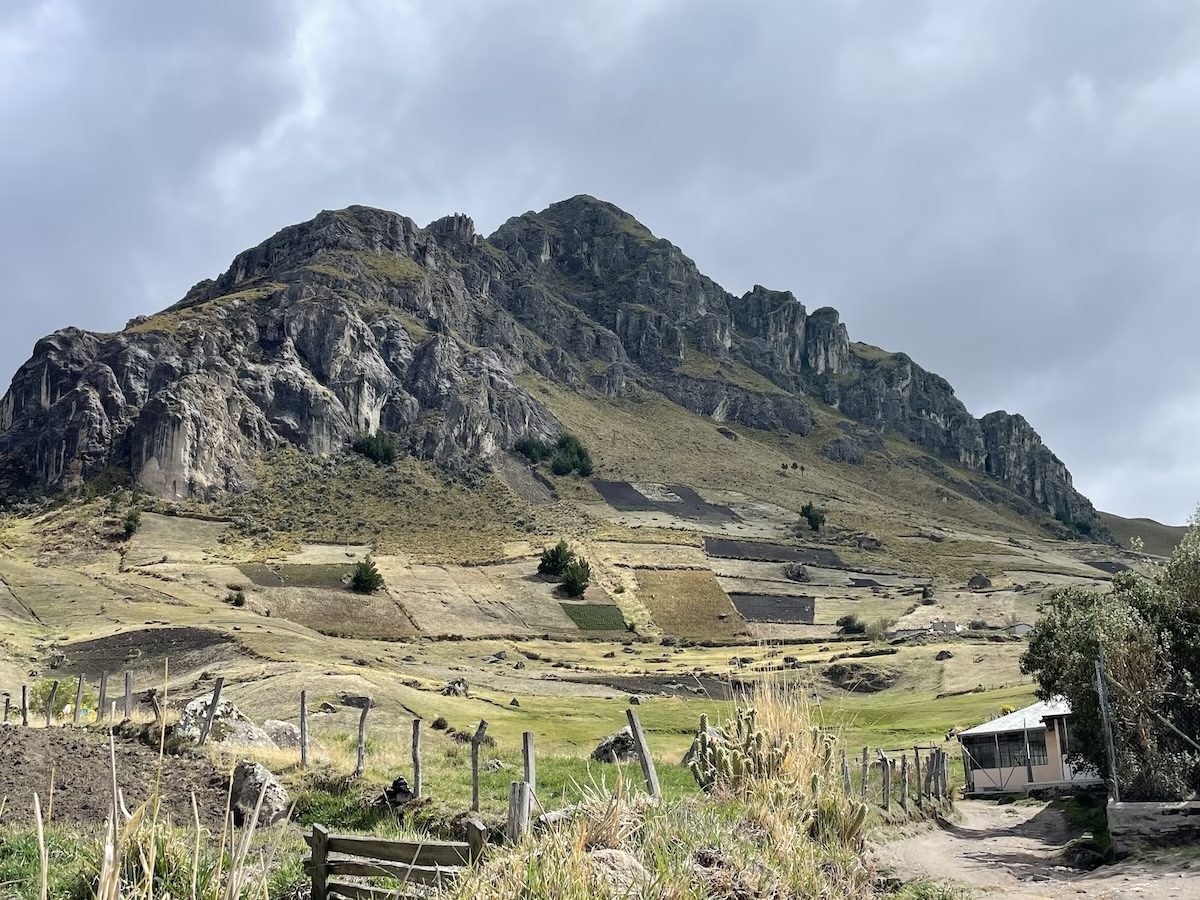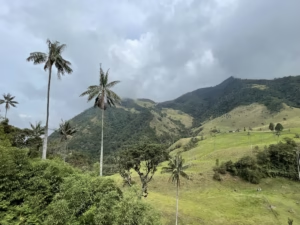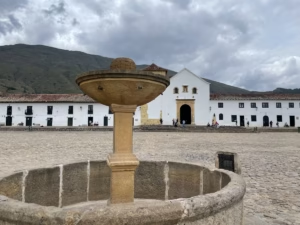Ecuador is a country in the middle. It’s located on the middle of the world, smack dab on the equator. In fact, the name “Ecuador” means “equator” in Spanish. In travel terms, Ecuador is in the middle of two major bucket list travel destinations: Colombia and Peru. However, this tiny South American nation has more than enough to compete with its more popular neighbors.
Ecuador is home to the tall, rugged Andes mountains that run down its middle. Those mountains sit between the Pacific coastline and the deep Amazon jungle. And of course, you can’t forget about the Galapagos Islands far off the coast. Amid all that you’ll find charming colonial cities, splendid hiking trails and friendly, hardworking people.
My wife and I traveled through Ecuador on our recent trip through South America. Full disclosure: aside from the Galapagos, we mainly spent our time in the Andean highlands in the center of the country. But even Ecuador’s mountainous middle has enough to offer that we spent two months traveling and never once felt bored.
In this blog post you’ll find Ecuador travel advice, places to visit including some hidden gems and one place to skip. Hopefully, you’ll be inspired to move Ecuador from the middle of your travel bucket list to the top where it belongs.
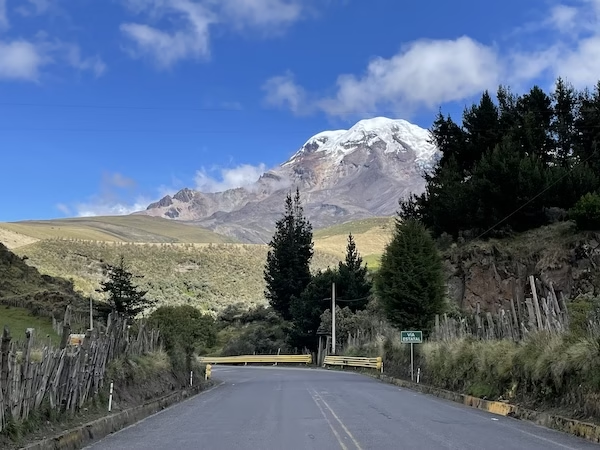
What to Know Before Traveling to Ecuador
Generally speaking, Ecuador is a pretty easy place to travel. Most destinations are within a few hours of each other, and the country’s geography makes for an obvious north to south (or vice versa) itinerary. On top of that, Ecuador uses the U.S. dollar as currency, so you don’t need to bother with conversion rates or money changing if you’re coming from the United States.
Ecuador is also a fairly economical destination. Neither accommodations, food or transportation are overly expensive. However, things are only inexpensive because the people here don’t get paid nearly what they deserve. Try to keep this in mind when you’re negotiating prices or deciding how much to tip.
Ecuadorians mostly speak Spanish. You’ll find English in the touristy areas, but knowing a little Spanish goes a long way. About 4% of the population speaks Kichwa, a dialect of Quechua, the language spoken in the Inca empire. You still may see some rural residents dressed in traditional indigenous clothing. Don’t take their picture without asking permission.
Ecuador’s climate varies significantly depending on where you are. Things are hot and tropical in the Amazon and coastal regions. In the highlands, however, Ecuador is downright chilly. Make sure to pack some warm clothes. If you forget you can always pick up some alpaca wool hats and gloves at the local market.
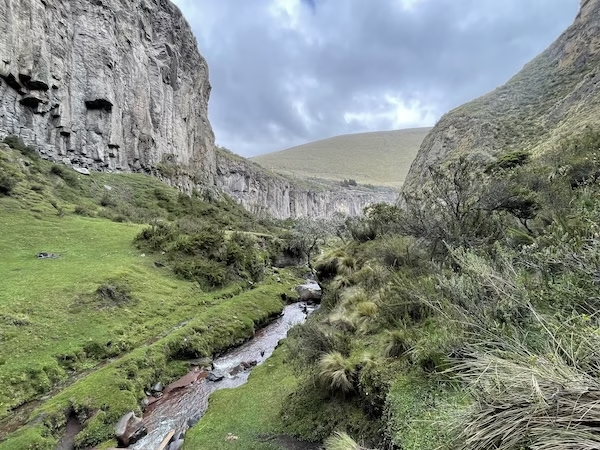
Is Ecuador Safe?
You may have read some recent news articles about crime in Ecuador. Those news reports are scary, and the country has definitely suffered more than its fair share of crime and gang activity in recent years. This includes the brazen daylight takeover of a TV station during a live broadcast. Most of the crime revolves around drug trafficking, mostly on the coast, where local gangs and even the Albanian mafia have taken over sections of cities.
To be completely honest, Ecuador’s crime wave was part of the reason we skipped visiting the coast and stuck to the Andean central highlands. We’d met another traveler who went to the coastal city of Guayaquil, but was told by her hostel to avoid leaving the hostel and not even walk down the street in during the day. It didn’t sound like a very fun travel experience.
Thankfully, it seems like the vast majority of Ecuador’s crime is focused on the coastal regions. The U.S. State Department is usually rather alarmist and exaggerated in my opinion, but they do have a detailed list of cities and areas to avoid.

The World’s Most Disappointed Pickpocket in Quito
We spent two months in the highlands and never had problems, except for when some teenage kid tried to pickpocket us in Quito. He happened to get the pocket where my wife kept a wad of used tissue and a troll doll. The troll doll was fine, but I think we might have lost some of the tissues.
I didn’t even notice what had happened until a group of Venezuelan migrants selling plastic ponchos on a street corner flagged me down and pointed to my bewildered wife. I think Venezuelan migrant’s reputation as criminals is drastically undeserved. In my experience they were actually trying to help prevent crime.
Anyway, Quito is a big city. Crime happens in big cities everywhere. Keep your big city wits about you like you would anywhere. Outside of the big cities, Ecuador felt safer than back home. That’s not to say that nothing will ever happen ever, but crime, especially violent crime, against tourists is rare. Just keep an eye on your used tissues.
I will say, though, it’s interesting to see how some Ecuadorian communities have started their own sort of neighborhood watch programs. Slightly scary neighborhood watch programs. It’s not uncommon to see signs saying something along the lines of “United Neighborhood: Any thief or extortionist caught here will be lynched.” Or sometimes burned.
In Ecuador, they use the word “vacunador” for “extortionist.” For the longest time, I translated “vacunador” literally to mean a person who gives out vaccinations. I remember thinking to myself, “wow, and I thought the whole vaccine issue was polarizing in the U.S…” But, no. They’re talking about criminals involved in extortion and protection rackets.
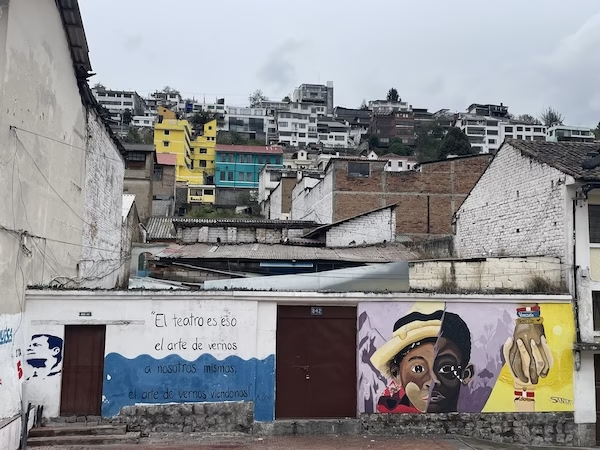
Other Safety Issues in Ecuador
While crime and homicides get all the headlines, there are a lot of other things in Ecuador that are much more likely to kill you. According to the State Department’s 2023 list of U.S. citizen deaths abroad, the most common cause of death in Ecuador was drowning, followed by the ominously vague category of “disaster”. Yet, nobody is going to tell you not to travel to a country because you might drown or might face a disaster.
As far as natural disasters, Ecuador is home to earthquakes and volcanoes. More commonly, the Andes region is prone to landslides. These rarely affect tourists, but heavy rains can and do cause entire neighborhoods to literally slide off the edge of a mountain. We saw the miserable results of this in Aluasí. It’s tragic, but one of those things you really can’t do anything to prevent.
The most dangerous thing you’re likely to confront in Ecuador are angry dogs. You’ll find packs of stray dogs roaming many of the country’s rural areas. Some are friendly, others are not. Never approach any random dogs, and it’s not a bad idea to get a rabies shot. If you do find yourself confronted by a growling stray, don’t make eye contact and don’t run. Try to turn your body to the side and walk away as calmly as you can.
Altitude Sickness
The most common safety issue the average traveler in Ecuador is likely to face is the altitude. Much of the country, including Quito, is located in the mountains well above sea level. In fact, Quito is the second highest capital city in the world, at 9,350 feet (2,850 meters) above sea level. Altitude sickness can affect anyone at these heights. Usually you’ll just get a headache and maybe some mild dizziness. At worst, it can cause your brain to swell and kill you.
Thankfully, coca leaves work like magic in relieving the symptoms of altitude sickness. You can buy them in most markets throughout Ecuador. Chew a couple or make a tea, and you’ll feel better almost immediately. Yes, they are the same leaves they use to make cocaine, but as they say in neighboring Colombia “the grape is not the wine, and the leaf is not the cocaine.”
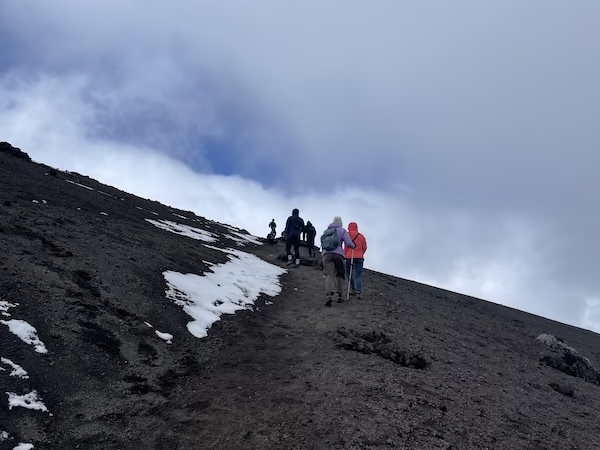
Ayahuasca Ceremonies
Speaking of drugs, we met a number of people who came to Ecuador planning on participating in an ayahuasca ceremony. I think this is a dumb idea for few reasons.
Ayahuasca has been used for centuries by indigenous peoples in the Amazon basin, but it’s traditionally only trained spiritual leaders who take the ayahuasca. They train for years to make use of ayahuasca and interpret the meanings of their hallucinations. The ceremony can also be an integral spiritual experience and is an essential part of many native religions.
Touristy ayahuasca ceremonies represent a commodification of indigenous spirituality. It’s cultural appropriation in a very deep and damaging way. And sort of like traveling to Italy and paying to put on priest robes and pass out wine and communion wafers. Can you imagine how much that would piss off the Catholics?
While I can empathize with impoverished communities doing what they can in order to get by, I also wouldn’t trust anyone who puts a price tag on a religious experience. And any asshole can claim to be a shaman whether they are or not.
Many of these fake shamans have taken advantage of tourists. There’ve been reports of robberies, injuries and sexual assaults during ayahuasca ceremonies and retreats. Think about it: you’re putting yourself in a situation where you’re going to be completely out of touch with reality, and completely vulnerable in a room full of strangers.
On top of all that, nobody really mentions that ayahuasca can make you vomit and shit yourself uncontrollably. Proponents say it’s “purging” and “cleansing.” I say it’s gross.
Instead of overpaying for a disgusting, sketchy and culturally insensitive drug induced enlightenment, why not try and have a transformative experience by chatting with and learning from the local people?
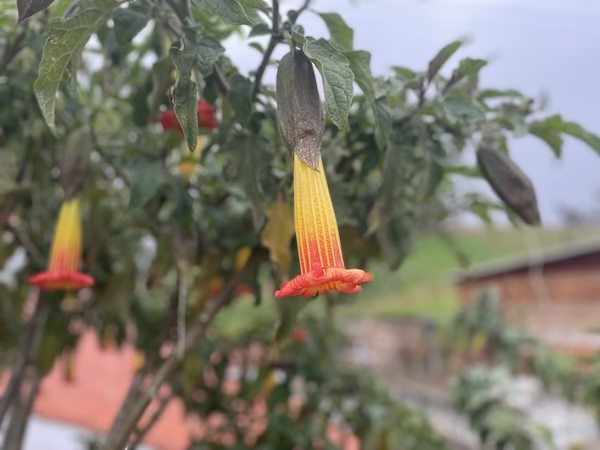
Ecuador’s People and Culture
The people of Ecuador, like most Latin Americans are generally very friendly and welcoming. Most people outside of touristy areas, however, don’t’ speak a lot of English. However, if you know some Spanish, you can find plenty of opportunities to learn about Ecuador’s people and culture.
I do have to say that Ecuadorians seem a bit more reserved than their neighbors. Perhaps I felt that way because we’d come from Colombia where the culture is outgoing and boisterous. However, we still met plenty of interesting people and felt very welcomed throughout our travels in Ecuador.
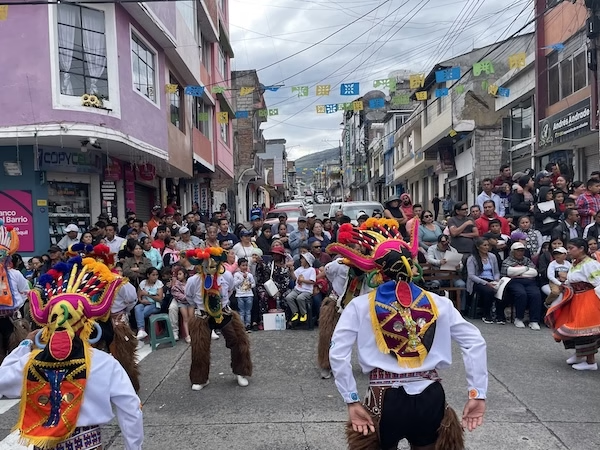
Ecuadorian Food and Drinks
Ecuador has its share of unique food and drinks. Similar to Colombia, the food in the mountainous region is rich and hearty. Think soups and stews that are perfect after a day hiking in cool, high-altitudes.
My one complaint about Ecuadorian food is that they seem to put cheese on everything. Soups, salads, ice cream, fruit… if you can eat it, you can probably find it slathered in cheese somewhere in Ecuador. This is good if you’re into cheese, but can cause problems if you’re lactose intolerant like I am.
Ecuador’s national dish is maybe the one thing that isn’t cheesy. It’s a hearty soup called “encebollado.” Encebollado is made of tomatoes, onions, fish and yucca. The soup represents the regions of Ecuador. The onions and tomatoes are from the highlands, the fish from the coast and the yucca from the rainforest. It’s like a spoonful of patriotism in every bite. It’s also pretty good. Interestingly, Ecuadorians put popcorn in their soup. Instead of packets of crackers like we’d have in North America, you get a small bowl of popcorn. It’s good.
Besides the encebollado you’ll find foods like thick, fried potato pancakes called “llapingacho”, roasted pork called “hornado” and “humitas” which are basically like Mexican tamales with cheese. Ecuador also has plenty of tropical fruits, most of which I’d never heard of before and whose names I forgot.
Around the beginning of November, you can find a “colada morada.” Colada Morada is a warm drink made with purple corn and flavored with fruit, sugar and spices. If you want something with a bit more pizzaz, you can try a “canelazo” which is a warm cocktail of cinnamon, citrus and aguardiente. Aguardiente is a potent alcohol whose name literally means “fire water.”
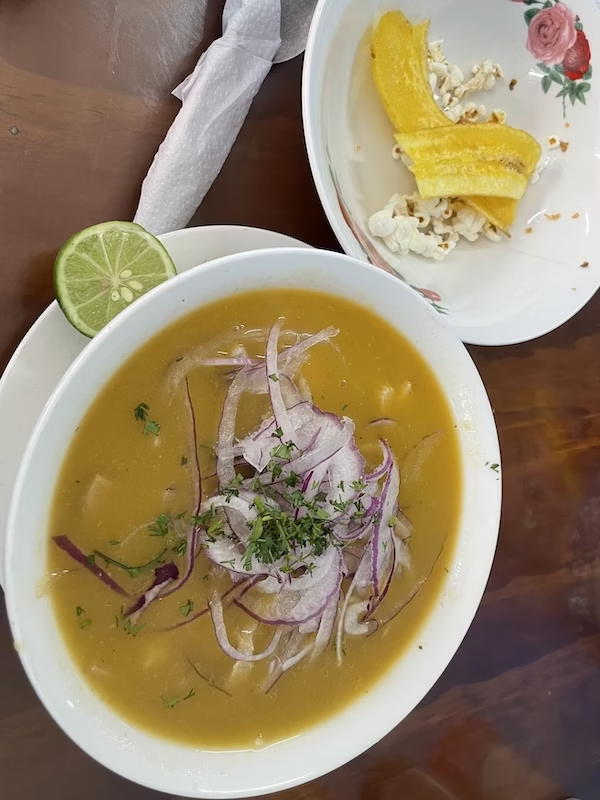
Transportation in Ecuador
I don’t recommend driving in Ecuador, not least because it frees you to drink as many canelazos as you want. Thankfully, public transportation is pretty easy and relatively hassle free. The rugged topography can increase travel time, but distances are close enough that you’ll probably never have to bother with the night bus. You can find buses going to almost every city and town you’d want to visit. Prices are affordable and routes are easy to figure out.
Some blogs and guides warn against the public buses, saying their dangerous. I assume those blogs and guides are probably trying to get a commission from overpriced tourist shuttles. Obviously, you should keep an eye on your belongings because opportunistic thieves exist everywhere. We didn’t have a single issue in our two months in Ecuador, nor did we meet anyone who had any issues. The bus is fine.
I never did figure out how to book bus tickets online in Ecuador. Thankfully, you can just get tickets at the station. Show up the day before if you’re feeling anxious or going somewhere without frequent connections.
Within cities and towns, you’ll likely get around by taxi. You’ll find plenty of bright yellow, official cabs patrolling the streets. You’ll also find pirate taxis, but you should probably stick to the official taxis. Have your accommodation call one for you if you’re worried. Uber works in Ecuador as well, though I feel like the official taxis were safer. We had a couple Uber drivers in Quito who seemed to have watched one too many Fast and the Furious movies.
Of course, you can also fly if you’re short on time. Or if you’re going to the Galapagos, since they’re islands and quite far from the mainland.
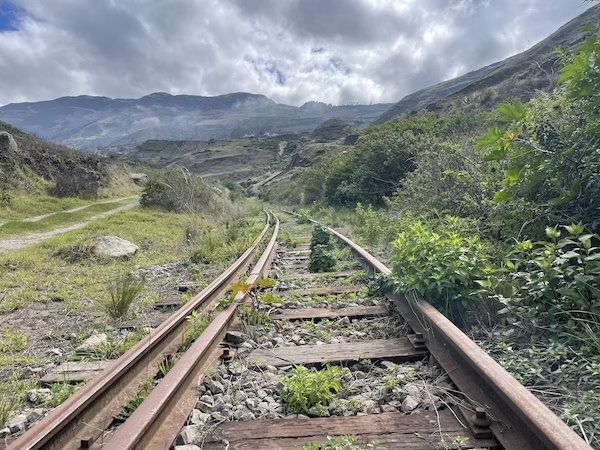
Weather and What to Pack for Ecuador
Ecuador, like much of South America, is kind of a pain in the ass to pack for. The coast and Amazonian basin are hot, humid and tropical. The central highlands, however, range from a pleasant spring-like climate to downright chilly.
The country essentially has two seasons: dry and rainy. We visited in late November through December, which is the start of the rainy season. Things weren’t too bad, aside from the hail storm that overtook us our very first day in Quito. Other than that, we didn’t face anything more severe than the occasional afternoon shower.
So, what should you pack for Ecuador? I don’t know, man. You basically have to pack clothing for every season. At the same time, if you want to use public transportation and travel more comfortably, you’re going to want to pack light. We were able to fit everything into our carry-on sized backpacks. We pretty much had to do laundry in the sink every night.
The good news is that Ecuador has plenty of modern stores and is connected to the global supply chain. If you find you forgot to pack something, you can always buy it when you’re in the country.
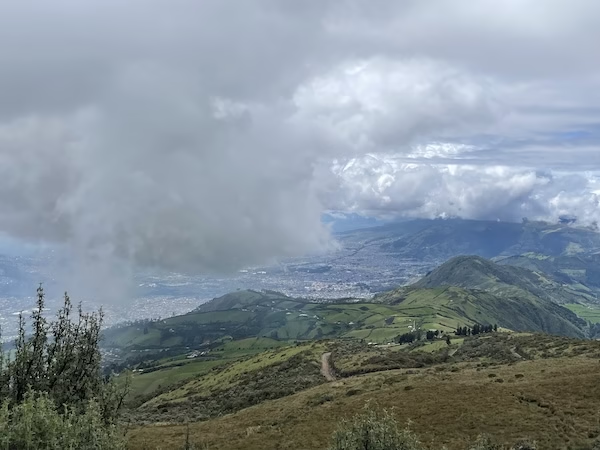
A Short History of Ecuador for Travelers
People first settled in Ecuador thousands of years ago. Along with nearby Peru and elsewhere, the territory is part of one of the cradles of civilization. All sorts of cultures and ethnic groups developed complex civilizations among the peaks of the Andes mountains. And recently, researches just discovered remains of a complex city in the heart of the Ecuadorian Amazon.
The most famous Andean civilization, of course, is the Inca. Ecuador formed a major part of the Incan empire. You can still see the remains of Inca ruins near Cuenca, as well as the ruins of other cultures like the Cañari. The Cañari remain controversial to this day. They were conquered by the Inca, and when the Spanish arrived, they aligned with them and helped conquer the Inca heartland in Peru. History is often morally complex like that.
The Spanish ruled over Ecuador for centuries, calling it the Royal Audience of Quito. They enslaved and exploited the local people, as empires tend to do everywhere. They did leave behind some beautiful architecture, though. In 1820, the city of Guayaquil declared independence from Spain. Troops from the army of the great South American liberator, Simón Bolívar, came in and secured Ecuador’s independence.
Ecuador became part of Bolivar’s Gran Colombia after 1822. Gran Colombia was part of the liberator’s vision of a powerful, modern, united South America. The vision fell apart after Bolivar died. Gran Colombia collapsed, more or less, into the modern-day countries of Venezuela, Colombia and Ecuador.
Ecuador spent much of the 19th and 20th centuries embroiled with both internal instability and conflict with its neighbors. This period included border wars with Peru, protests, revolutions and a period of military rule.

From Correa to Noboa, Ecuador in the 21st Century
After a period of social upheaval in the early 2000s, Ecuador elected left-winger Rafael Correa as president. Correa was a populist and socialist, in the mold of Hugo Chavez or Evo Morales. Ecuador joined the “pink tide.” An economic boom, based mainly on oil and commodities, helped Correa’s vision. He reduced poverty and increased access to education and standards of living for a lot of Ecuador’s lower classes.
Correa stepped down after three terms, in the midst of an economic crisis, and was replaced by his vice president, Lenin Moreno. Despite being named “Lenin”, Moreno supervised a sharp right-wing turn. He was almost the opposite of Correa. He cut social programs and cozied up to both the United States and the International Monetary Fund.
Moreno was followed by right-wing banker, Guillermo Lasso. During Lasso’s term, social inequality increased as well as crime, especially in Ecuador’s prisons and its coastal regions. Rumors on the street implicate Lasso with organized crime and the drug cartels. Mass protests in 2023 forced Lasso to resign, and the country held special elections.
Conservative son of a banana magnate, Daniel Noboa, won these elections on a campaign to crack down on crime. He modeled himself specifically on El Salvador’s Nayib Bukele. Since taking office, Noboa has become an ally of Donald Trump and led the country in a very Trumpian manner. He’s jailed and intimidated journalists and opposition politicians, suspended the constitution in various regions and even raided the Mexican embassy. All of this in the name of fighting crime.
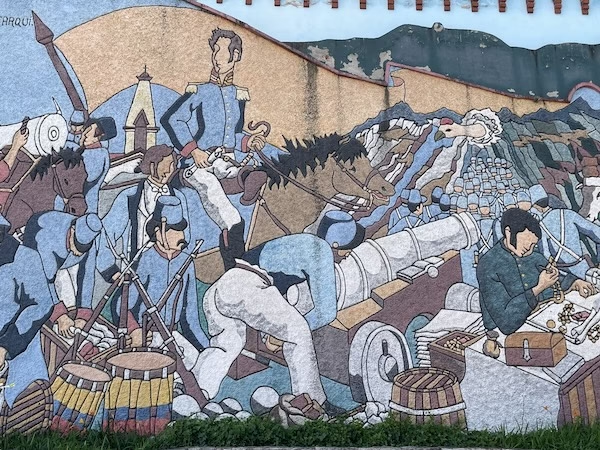
Ecuador Today
It hasn’t really worked. Crime is still a major issue, and recently Spain reported finding 13 tons of cocaine on a banana boat from Guayaquil. Despite this, Noboa managed to eke out a slight victory and head to a second term.
Needless to say, Ecuadorian society is deeply divided. For the average traveler, this means you might come across a strike or protest that puts a wrench in your travel plans. As much as you might be tempted to fight the power with the locals, it’s best to keep clear.
If someone starts talking politics to you, try to just be quiet and listen even if you don’t agree with them. You’re not a local, nor are you an expert on Ecuadorian politics. Feel free to give your opinion if you’re asked, but otherwise, treat it as an opportunity to learn something.

Where to Travel in Ecuador
Enough about history and politics, and on to the fun stuff. Where to travel in Ecuador? Despite its small size, Ecuador has plenty to keep you busy for months. Maybe longer. Even in just the central highlands, you’ll find both big cities and charming colonial villages, lush cloud forests, high-altitude grasslands and snow-capped volcanoes. And let’s not forget the Galapagos Islands, which are like a whole world onto themselves.
The problem in Ecuador is less figuring out where to go, but more where not to go. Read below for a brief overview of the places we visited on our two-month Ecuador journey. Many are well established on South America’s tourist trail, while others are more hidden gems. All of them are worth visiting, with one glaring exception.
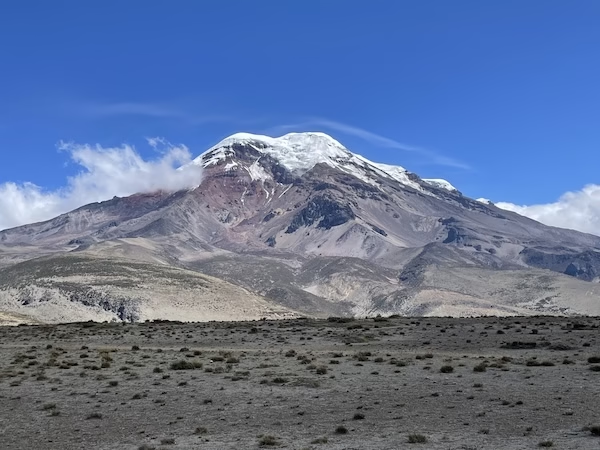
Quito
Quito is Ecuador’s high-altitude capital. It’s probably the place you’ll begin your Ecuador adventure. The city is filled with gothic cathedrals, colonial buildings, loads of museums and some absolutely stunning churches. Some of the neighborhoods feel a little rough around the edges, but it’s still a great city and a must-visit.
Quito is also a great base for some nearby day trips. You can easily visit some paramos, which are high-mountain grasslands, cute nearby towns. Quito’s also the place to see the monument marking the equator. Where else can you cross the northern and southern hemispheres in a single step?
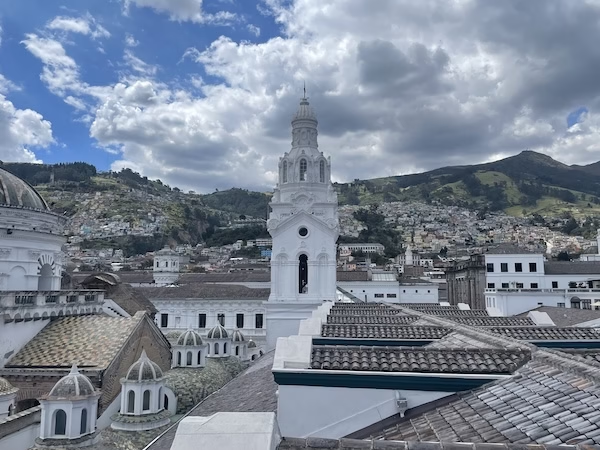
The Galapagos
One problem with being an atheist is the lack of holy pilgrimage sights. We have no Jerusalem or Mecca to call our own. The closest thing might be the Galapagos Islands, which inspired Charles Darwin’s theory of evolution.
The Galapagos is also a stunningly beautiful place, with islands that range from harsh black volcanic wastelands to lush verdant green paradises. Between every island is a stretch of the most crystal blue water you’ve ever seen. And let’s not forget the animals. You’ll see sea lions, marine iguanas, blue-footed boobies, sea turtles and more. Yes, the Galapagos is expensive, but totally worth it for both nature lovers and pious non-believers.
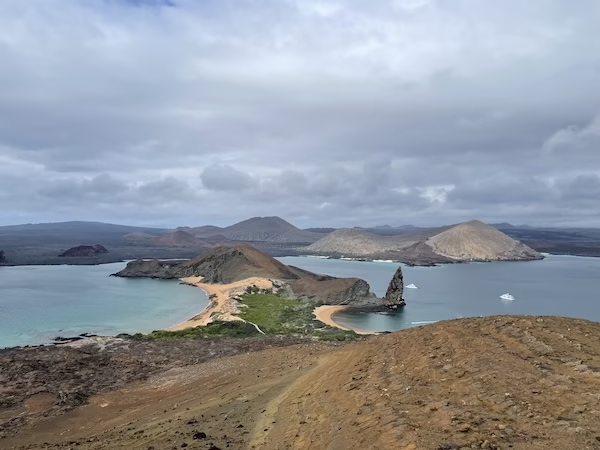
Mindo
A few short hours from the concrete jungles of Quito you’ll find the small town of Mindo. Mindo is a lovely little town situated amidst gorgeous green hills and rich cloud forest. It’s also famous for birds. Mindo holds numerous records for most bird species sighted in one day. Birding has become a matter of town pride. In town you’ll see all sorts of murals and graffiti depicting the region’s feathered friends. Also, there’s some nice hiking.
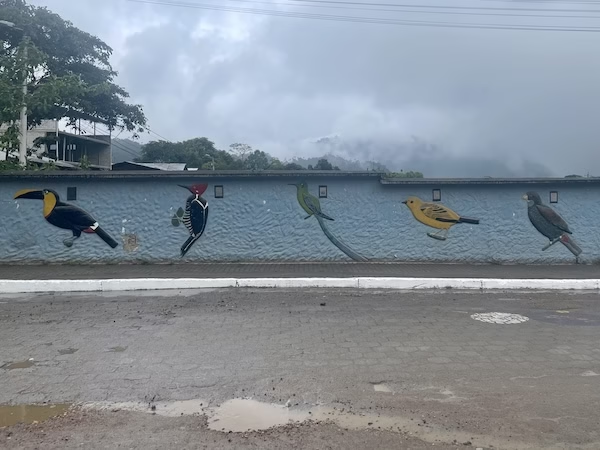
Cotopaxi Volcano
The Cotopaxi Volcano is an almost perfect snow-covered cone that rises above the surrounding landscape. It’s a very iconic volcano, and only a short bus ride from Quito. You can even visit Cotopaxi from the capital on a day trip. The hike up the volcano’s slopes is a miserable, but rewarding, experience. However, if you stay a few days in the area, you can not only recover from the volcano hike, but also discover some relatively unknown hiking trails and immerse yourself in rural Ecuadorian village life.
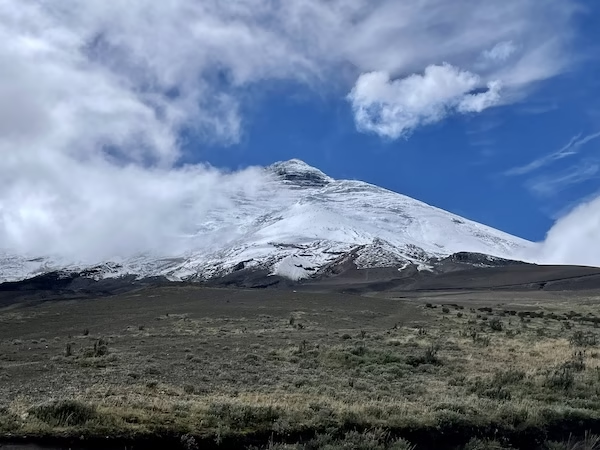
The Quilotoa Loop / Zumbahua
The Quilotoa Lagoon is a well-established part of Ecuador’s backpacker trail for a reason. This azure blue volcanic lagoon, surrounded by Andean peaks and rugged countryside, is absolutely stunning. Hiking around the lagoon is a fantastic experience. Some people even do a trek between villages. However, do yourself a favor and skip the touristy town of Quilotoa. Instead, base yourself in the more authentic nearby indigenous village of Zumbahua for a more authentic experience.
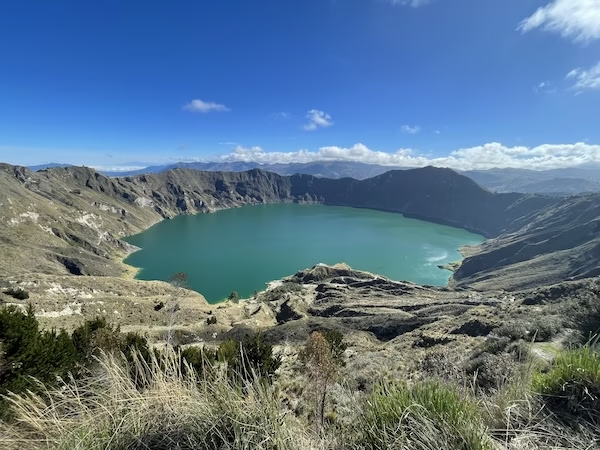
Baños
Baños is a super popular and well-established staple on Ecuador’s tourist trail. Despite the tacky souvenir shops and gluten free bakeries, it’s also a must-visit. The city is gorgeous and surrounded by rushing rivers, dramatic vegetation-clad cliffs and towering waterfalls. You can spend your days white water rafting or mountain biking, or just relaxing in the hot springs that give the town its name. Baños is one of those rare tourist traps that is popular for a good reason.

Riobamba
Riobamba, on the other hand, is a little less popular. Most travelers come here as a base for visiting Ecuador’s other famous volcano. Volcán Chimborazo is another magnificent, snow-capped peak. The area is surrounded by beautiful paramo grasslands and steep gorges with waterfalls to explore. Beyond the volcano, Riobamba is a delightful city with a charming colonial center and a lovely place to spend a few days.
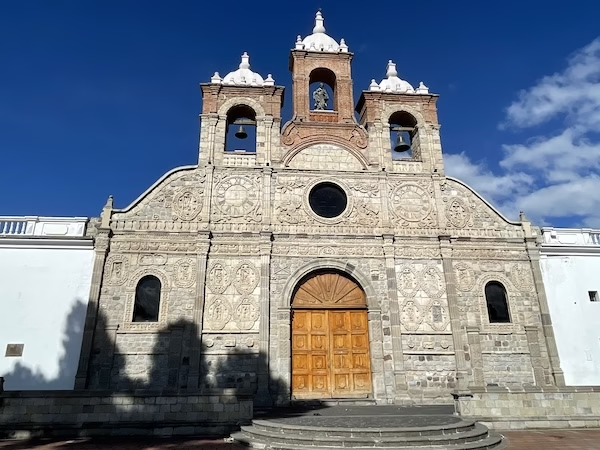
Aluasí
Aluasí is something of a hidden gem in Ecuador. Or at least, it feels that way compared to places like Baños. This small town’s claim to fame is the Nariz del Diablo railway. The “devil’s nose” is noted for being one of the world’s most astounding feets of engineering. The train wasn’t running when we visited, but Aluasí has an even better trick up its sleeve. We took an amazing hike that follows the train route at higher altitude, with some of the most amazing mountain views along the way.
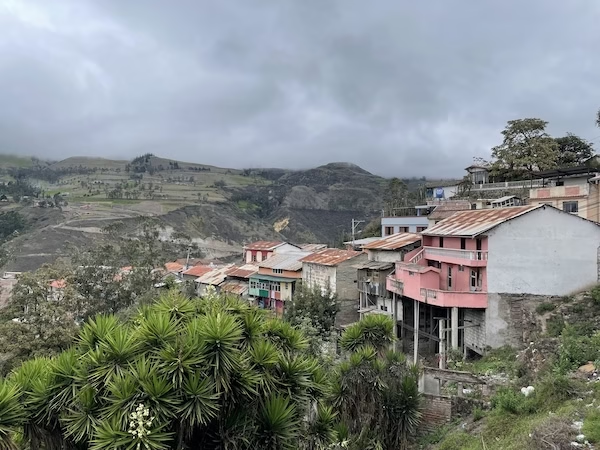
Cuenca
Cuenca is another Ecuadorian travel destination that’s popular for a good reason. The city attracts all sorts of tourists and expats with a colonial center that rivals anywhere in Latin America. However, unlike Quito, Cuenca has a much more relaxed feel to it. Cuenca also makes an excellent base for paramo hikes, soaks in hot springs and visits to indigenous Inca and Cañari ruins. While Cuenca may seem like an obvious palce to visit, it ended up being one of my favorite spots in Ecuador.
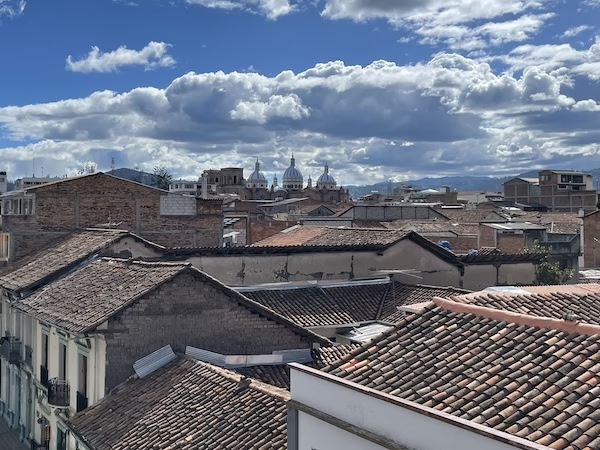
Loja
Beyond the beaten path of Cuenca, we have the charming little city of Loja. Loja’s colonial center won’t rival its neighbors, but the city is a pleasant place to spend a few days and feels very livable. They also have a castle and a park with a cement replica of the Kremlin and other famous buildings for some reason. More importantly, Loja is a base for hiking the nearby forests of Podocarpus National Park.
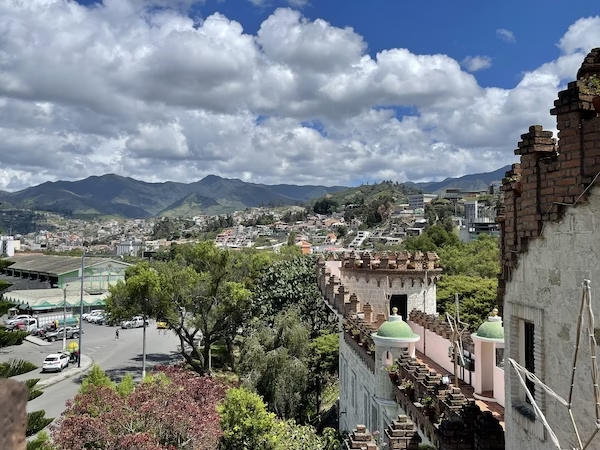
Where to Avoid in Ecuador
Aside from the high-crime areas on the coast, most of Ecuador is worth traveling to. The one exception is an expat-infested hive of scum and villainy that should be avoided at all costs. That place is Vilcabamba.
Vilcabamba
The sad thing is that the hills and countryside surrounding Vilcabamba is quite beautiful. And some of the outlying, local, neighborhoods are nice. The center, however, is one of those expat enclaves that’s beginning to feel more like a settler colony than a foreign city. And worst of all, those settlers are hippies.
North American women wander the streets hawking gluten free baked goods. Cannabis shops operate with impunity in a legal grey area. Yoga studios abound. Posters tacked to electric poles claimed the city’s proposal to install security cameras amounted to the “final lockdown” and was part of the “global agenda to build a digital prison.” I imagine Robert F. Kennedy Jr. has a huge fanbase in Vilcabamba.
The town first gained attention as a so-called “blue zone;” a place that has a higher than normal amount of people who live over a hundred years. Proponents of the blue zone theory claim it’s something in the water. It’s more likely that residents were exaggerating their ages in a region that didn’t have sufficient or accurate birth records.
Unfortunately, the blue zone designation is probably what ruined Vilcabamba. Again, the surrounding area is beautiful, but the center of Vilcabamba is incredibly annoying. There are other beautiful places to visit in Ecuador that aren’t infested with the human embodiment of a non-FDA approved weight loss supplement.
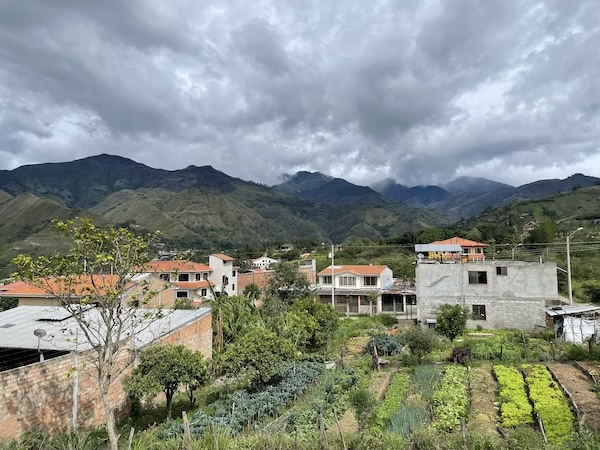
Final Thoughts on Ecuador
While I couldn’t wait to leave Vilcabamba, I loved the rest of Ecuador and am looking forward to the day I can return. While the Galapagos Islands are Ecuador’s major highlight, the country offers so much more. From the colonial charm of Cuenca to the colorful birds of Mindo and imposing slopes of the Cotopaxi Volcano, Ecuador is filled with astounding scenery, delicious food and friendly people.
While Ecuador is still suffering from the middle of a crime wave and political turmoil, we still found it a safe and relatively easy place to travel. Don’t let the bad news deter you from visiting. And while Ecuador is stuck in the middle of South American travel powerhouses of Peru and Colombia, this scrappy little nation has just as much to offer as either of its neighbors.
Don’t make the mistake of skipping out on this scrappy little South American nation. Ecuador deserves a spot on any trip through the continent, or even a visit on its own.
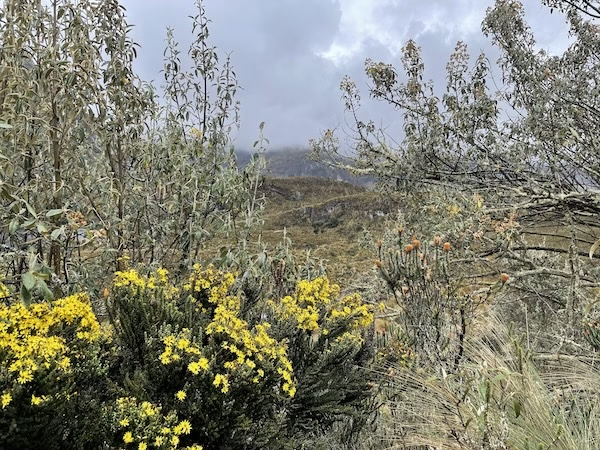
Useful Websites for Traveling Ecuador
As much as we might long for the days when you could show up to a town with nothing more than a beat-up guidebook and a sense of adventure, today much of traveling involves being glued to our phones making bookings. I’ve compiled some helpful apps and websites below that at least help make those bookings more convenient so you can spend less time staring at your phone and more time exploring at your surroundings. Some of these sites are affiliate links that give me a small commission at no cost to you if you chose to book through them. All of them are sites I’ve used personally and have no problem recommending.
Just be sure to do your due diligence as much as possible. Only hire local guides and try as much as possible to stay in locally owned hotels and hostels so that your hard earned travel dollars actually go to support the local economies of the places you visit.
Booking.com is basically the world’s only hotel booking website. They have hotels, guesthouses and vacation rentals all over Ecuador.
Hostelworld is the go-to site for booking hostels. If dorm rooms and shared bathrooms are your thing, you’ll find hostels all over Ecuador.
Get Your Guide offers tours and activities all around the world. Unlike some other sites and apps that do the same thing, you can actually find some reasonably priced deals here.

